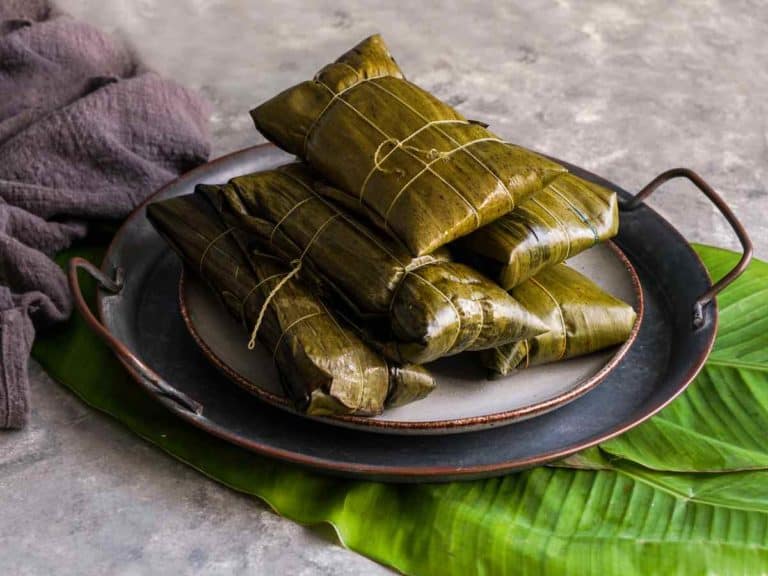How To Store Canned Food And Avoid Mess
Canned foods take a large part of any food pantry; however, canned food storage can be problematic. You know how easy it can be to buy a can or two, put them at the back of your pantry, and forgotten. Then by the time you remember you had it, they are already expired. To prevent this from happening again, you need to know how to store canned food.
As a general rule, to store canned food properly, invest in good storage where you can place them conveniently and safely. Make sure to keep cans in a cool, dark spot since direct exposure can affect the food quality, flavor, and color.
So, if you find yourself with more canned foods, you might struggle to find a place where you can store them safely and conveniently. While stacking is one excellent solution, one wrong move and you end up dodging a tower of falling cans. Trust me, it hurts when one catches your toe.
Instead of risking yourself to some pantry avalanche, you may invest in some canned food storage organizer. But, before that, here are the things you should know when storing canned foods:
Canned-Food Storage: Pantry
Unopened
The pantry or the space you have in your kitchen is the best place for you to store unopened cans.
However, it depends on the condition of the can before storage. Make sure that the canned food has no dents in it. It is because these dents can cause microscopic holes in the can, allowing the air inside the can. This can cause spoilage of the content.
If you find a can with a dent, it may still be good to use. You may open the contents and check to see if it is already spoiled. If it is still good to use, use the food immediately. However, dented cans are not recommended for long-term storage.
If you are unsure about the kitchen space to make a suitable makeshift pantry, you must consider the following criteria:
- It must be cool
- It must be dry
- It must be out of direct sunlight
- It is unlikely to go below freezing
Once you placed them in an optimal canned good storage environment, you should use them up to the printed expiry date on the can.
Opened
Once opened, the contents of any can should be emptied and stored in the fridge.
Canned Food Storage: Refrigerator
Unopened
There’s no need to keep canned food in the fridge. These are best stored in the pantry. Meanwhile, if you open canned food, and won’t be able to consume all the contents. You can see below the things you should do.

Opened
If you are not using a can’s full contents, then make sure you store the remaining food properly. One thing you should not do is put the tin with the contents of the leftover food inside the fridge. This advice is not highly recommended because it makes you seriously ill.
Yes, you can get a disease like botulism. Botulism is a rare but serious illness caused by a toxin that targets the body’s nerves. They usually link it with commercially canned food, but it is only likely a threat from the canning facility that maintains poor hygiene standards or just does home canning.
The best way to minimize the risk of exposure to botulism is to make sure you buy goods that are undamaged and check if the contents have gone bad.
The primary reason it is not advisable to store open cans in the fridge is that the food may cord some of the can’s coating, making it taste bad. This is especially common in food with high acidity like tomatoes. Once opened, it leaves the contents exposed to the air, making them spoil faster. It puts you at risk of general food poisoning.
So, if you want to store leftover contents in the fridge, empty the can along with any residual water, syrup, or brine, and place it in the airtight container or jar. Place this at the back of the fridge, then place it in an airtight container or jar. Put the container at the back of the fridge to keep it extra cool and last longer.
Related Article: Is It OK to Cook Canned Food in a Can?
Canned Food Storage: Freezer
Unopened
Placing the unopened canned food in the freezer is not a good idea. Any liquid in the can will expand, causing them to burst. The pantry is the best place for them to store.
Opened
While it is possible, placing opened canned food in the freezer is not advisable.
How Long Can You Keep Canned Goods
For best results, use canned goods within a year. If the cans and food look okay, then the food is still safe to eat; however, it may not taste as good or as nutritious. Low-acid foods like vegetables and soups will last longer than high-acid foods such as tomatoes and pickles.
If the quality is not considered, canned foods are usually safe to eat for two or three years. If you store lots of canned foods, rearrange your stock so you can use up the oldest cans first.
Where To Store Canned Foods
Place canned foods in a cool, dark, dry place. Moisture can corrode the bans so do not store them in a moist place like a damp basement. In glass jars, moisture can corrode the lids and break the seals. Any of this can lead to spoilage.
Aim for temperature between 50 to 70 degrees F and keep the cans or jars from freezing and make sure they don’t get too hot. Storing cans for prolonged periods above 75 degrees F can lessen their nutritional value. Once the temperature is higher than 100 degrees F, the risk of spoilage is higher.
Therefore, make sure not to store them near a heat source, such as a stove or furnace. Keep them away from direct sunlight. If you need to store them in areas with cold temperatures, wrap them with newspaper, tuck them in boxes, and cover them with blankets.
How To Tell When Canned Food Has Gone Bad
Here are the telltale signs that your canned food has gone bad:
Look
One of the easiest ways to determine if the canned food has gone bad is to look at the can. If the can is bulging, then most likely the contents have gone bad also. The bulging is caused by the gas that is produced by mold and bacteria.
When opened, if the liquid spits or foams out of the opening, it is very likely that’s already spoiled.
Lastly, if there is any visible mold on the food inside the can, then throw it away.
Smell
Canned food that has gone bad will develop an unpleasant odor that can be smell once the can is opened. If you smell something on the canned food, discard it right away.
Taste
If you think that the smell and the appearance do not look good, it is not recommended to taste it. Even tasting a small bit of canned food can put you at greater risk of getting botulism.
That’s why it is important you practice good storage for your canned goods. Here are some tips that might help:
- Keep out of direct sunlight
Direct exposure to Sun can actually affect the food quality, flavor, and color.
- The right space
Keep your canned goods in cool, dry, and dark spot like in the pantry or drawer.
- Check the expiry date
Canned food can expire. It can vary from 1 to 4 years, depending on the type of food or how it can be stored as well as the condition of the can.
- Check for rust spots, leakages, and can damage
Canned food is sealed to prevent bacterial growth; however, if there are dents or holes present in the can, check them first. If you think they are no longer good, toss them right away.
Canned Goods Shelf Life
The general rule of thumb is the canned food has a shelf life of at least 2 years from the date of purchase. But, if you keep the food in proper storage, you can safely double the shelf life from 3 to 6 years.
Though it gets a bit confusing because canned food manufacturers are not required to put the expiry date on the can. The reason for that is that canned food retains its safety and nutritional value beyond the recommended 1 to 4 years, but there is some variation in the quality like change in color and texture.
Factors That Can Limit The Shelf Life Of Canned Foods
Rust
Unfortunately, metallic cans are prone to rust. If the rust develops, it can create tiny holes that allow spoilage agents to get in it. Alternatively, rust can weaken the can enough to break after a bump or small impact, which can lead to spoilage.
Corrosion
Over time, foods that contain certain chemicals may react with the metal of the can. In particular, foods like tomatoes and other fruits can cause this to happen because they contain a large number of acids. When this reaction happens, the food may change in taste and texture. Eventually, the corrosion will cause the food to lose its nutritional contents.
High Temperature
The ideal temperature to store canned foods is between 50 and 70 degrees Fahrenheit. However, most canned goods must be okay for a reasonable amount of time when stored in temperatures up to 85 degrees Fahrenheit. Anything that is above that temperature has a higher risk of spoilage with every hour that passes.
Throwing Away Rusted Cans: Pros and Cons
If there’s just a little surface rust that can be easily wiped off with the finger, it is okay to keep the can. Discard the can if it is heavily rusted. A rusted can might have tiny holes in it that can allow bacteria to enter and contaminate the contents. If you see the rust inside when you open it, do not eat the food. Just discard it.
Here are some of the best storage organizer for your canned goods:
The Best-Canned Food Storage Organizers
Simple Houseware Stackable Can Rack Organizer

This canned food rack organizer is made of hard, sturdy metal that is capable of holding large, heavy cans in an organized manner. It can hold up to 36 large cans in varying sizes, allowing you to keep a variety of canned food in a single place. It is designed to make your life easier; well, thanks to the stackable design of this product.
Though it is compact, it can fit on most pre-existing shelves without the need to make changes to your pantry layout. Moreover, it can be easily assembled, requiring no tools in just a couple of minutes. Once fully assembled, this organizer is very durable and sturdy, preventing potential accidents.
The best feature of this organizer is the divider system, where you can align and organize cans of different sizes.
What I Liked:
- Easily stackable design
- Easy and quick to assemble without tools
- It can hold large cans
- It can fit on most shelves
What I Didn’t Like:
- Plastic dividers may be flimsy
- Occasionally, it is difficult to load and unload
FIFO Can Tracker and Organizer for Pantry

This can organizer by FIFO can help you in organizing your canned goods. Not only organized but also in constant rotation, so you get always the oldest stock. It is sturdy yet spacious, it can hold more than 50 cans of different sizes and weights. The design of this rack allows you to create a group of cans according to the given criteria. This makes the organization a lot easier.
This organizer stands out due to its elegant can rotation system. Aside from allowing you to choose the right can, this system will make it easier to rotate the cans according to their expiration date. Moreover, the rotation process is quick and simple, and it does not require much effort at all.
The FIFO Can Tracker is convenient, easy to install and use. It fits perfectly in most pre-existent shelves, pantry racks, and cupboards. As a result, it can be used in different situations and settings.
What I Liked:
- It allows you to rotate the cans of food
- It can be used with cans of different sizes
- It is easy to install on an existing shelf
What I Didn’t Like:
- Cans in the middle of the storage rack can be difficult to reach
- Plastic edges a little sharp
Conclusion
Having the best-canned food storage does not mean much if you don’t know how to store it properly. Luckily, all the products mentioned here can help you get the best storage. Make sure you are aware of the signs so that you won’t end eating spoiled canned food.
Also, follow the basic tips on how to store them, and they can last for years.





